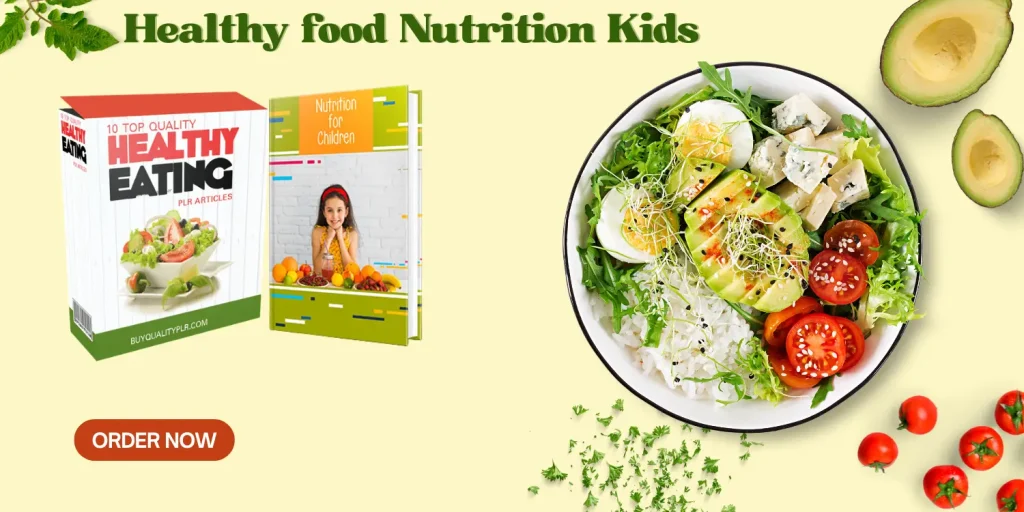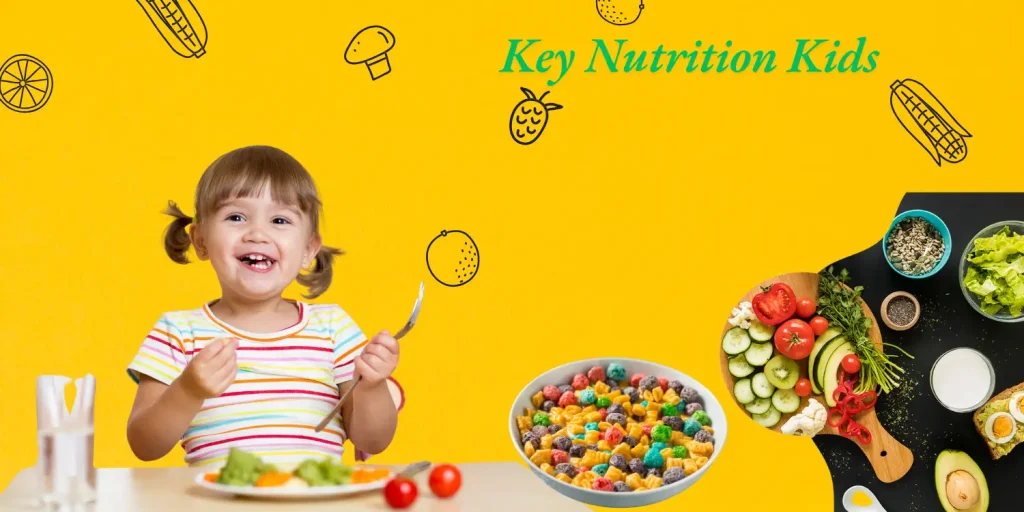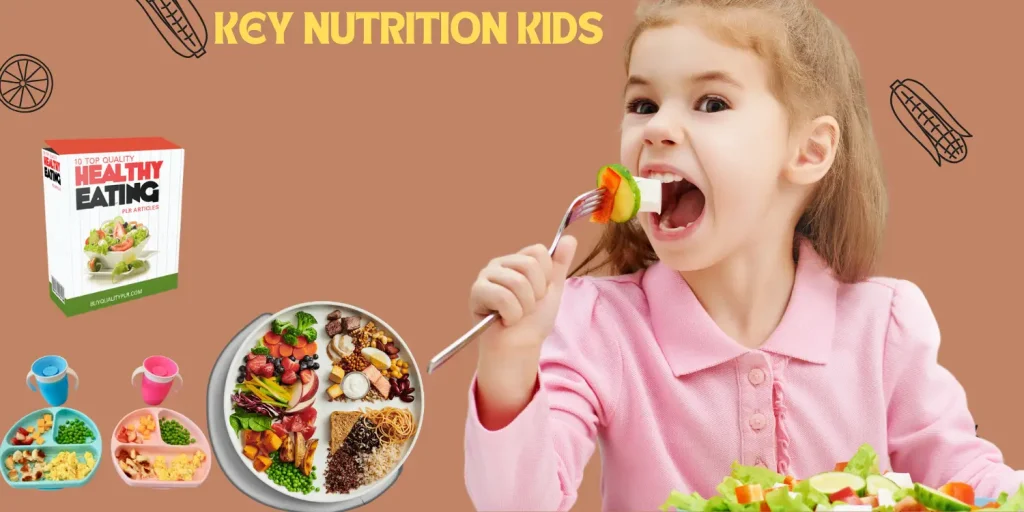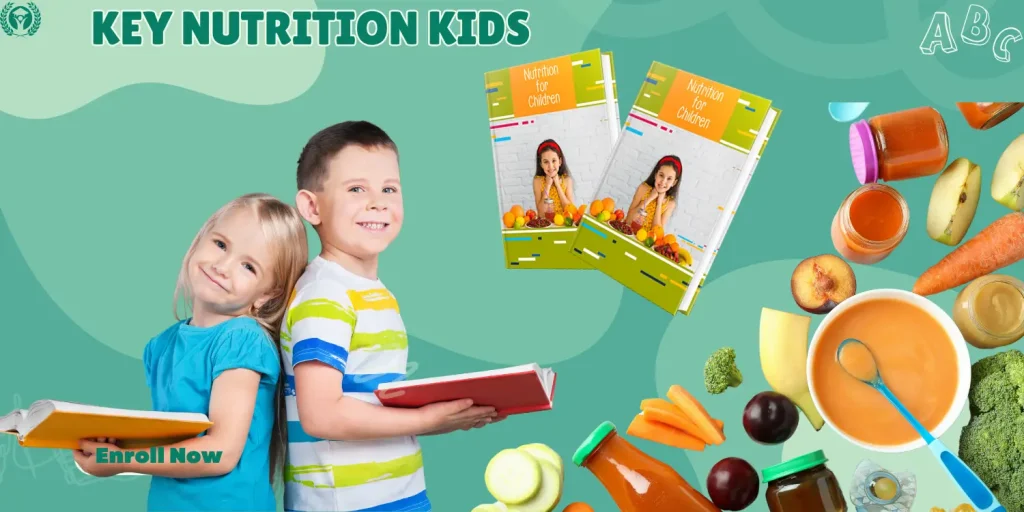Nutrition for Kids: An Overview
In fact, a good diet is the cornerstone of a long life, specifically for infants and children, whose bodies and minds are in a period of rapid growth. Beyond quelling auditory tummies, proper nutrition in these nascent years is essential for promoting growth and immune function and for establishing patterns of health later in life. Identifying and preparing the children is Step One in creating a healthy body and a healthy mind. This is the No. 1 thing I believe a parent, teacher or other caretaker can do for a child to support their physical, mental and emotional well-being.
A child is constantly growing and developing, and therefore their Nutrition for Kids needs are vastly different from an adult’s. These nutrients (vitamins, minerals, proteins, lipids, carbs, etc.) ensure that kids are healthy, as they serve to help build muscles, strengthen the bones in children and get them prepared to be active the whole day. For instance, calcium and vitamin D might support the development of strong bones, while iron helps oxygen travel in the blood and plays an important role in brain development. A diet rich in colorful fruits, vegetables, whole grains, lean meat and healthy fats may help children acquire these essential nutrients.
Controlling children’s individual dietary preferences, appetites and eating habits, which tend to differ widely and change with age, is one of the biggest challenges of ensuring they get a nutritious diet. Picky eating, fussing, and rejecting new things are struggles every parent has faced. Steps that can be taken to ensure children develop a positive relationship with food start by providing a variety of nutrient-dense foods in childhood, modeling and promoting healthy behaviors, and maintaining a positive mealtime environment. As in most other parenting situations, consistency and patience will go far toward helping children develop a positive relationship to the food they eat.
A physically demanding body requires Nutrition for Kids; however, apart from its physical aspect, good nutrition also results in mental and emotional well-being. Research shows that students who consume a nutrient-rich diet also tend to perform better academically overall, as well as have better memory and attention span. Diets rich in sugar, processed foods, and bad fats, by contrast, have been linked to issues ranging from mood swings and fatigue to long-term health risks such as obesity, diabetes and heart disease. Older kids can be taught how to make healthy food choices and to manage their health;
Water is the most essential element of any diet of children, and hence this parametre can not be overemphasised. It helps in digestion, thermoregulation, and other physiological body functions. Get the kids settled with milk or water, best for hydration and nutrition. They can also consume soda or other sweetened and flavored drinks.
Diet, too, will have to take into account the social and cultural aspects. Food bonding Family meals not only help share delicious cuisine, they build stronger bonds and cultural customs too. And schools in that way can either help in the form of lunch provision to the children and teens and can also help educate them by providing good lifestyle habits.
In the era of fast food and quick-hit, healthless snacks, just a dollar menu cost and microwave minutes away, teaching children about the importance of real food and home-cooked family meals has never been more important. Instilling healthy eating habits at an early age empowers them with the knowledge and skills to make good decision and sets the foundation for a healthier tomorrow. At the end of the day, giving kids the opportunity to be successful and feed their lives is the same as investing in who they become, and whether they will know happiness, the power of community, and chase their dreams.

What is Nutrition, Kids?
Hello, children! So we need to talk about something more essential: nutrition. Nutrition has to do with how the food you eat helps your body grow and develop and remain healthy and well. Your body multiplies the superpower potential. To be your best superhero self, you need the best fuel. That’s why you need to eat a healthy diet!
What Makes Nutrition Vital?
And when you eat, your body breaks it down into energy. This is the energy that gives you the ability to run, jump, have fun, and think! However, not all foods have the same energy equivalency. Read and listen for what some foods do, like keeping your mind sharp, or allowing you to grow taller and strengthening your bones. Consuming appropriate nutritious food daily makes you healthy and a prevention from disease.
By _
Nutrients: What Are They?
Nutrients are little helpers in the food you eat. The six major types of nutrients each have distinct, important roles.
Carbohydrates These give you quick energy to learn and play. They can be found in bread, pasta, rice and fruit, among other foods.
Proteins: These are blocks your body uses to build things. They’re what help build and repair your tissues and muscles. Examples of foods rich in proteins are eggs, chicken, fish, beans, and nuts.
Fats — Fat is another form of energy. Not only do they come loaded with those brain boosters, they also contribute to brain wellness. Nuts, avocados and olive oil, for example, contain a high fat healthy fat.”
Vitamins: Little magical tools that help keep this machine of yours running. Vitamin D, for instance, is important for bone health; vitamin C may help stave off illness.
Minerals: It also gets minerals like iron and calcium. Iron helps your blood carry oxygen, and calcium helps form strong teeth and bones.
Water: You can survive without food, but you can’t live without water. It is also important to note, the fact that the nutrients present in water only becomes beneficial to your body as it is bonded with water, thus providing hydration. And please remember to stay well-hydrated throughout the day!
What Food Is Appropriate?
A good rule of thumb: Eat a variety! No, not candy — naturally colorful foods such as fruits and vegetables. For instance:
• Red Group foods such as tomatoes and apples
• Green foods, like spinach and broccoli; • Orange foods, like oranges and carrots
Diet in Balance = Grains & Proteins & Healthy Fats
Foods to Be Aware of
However a treat every now and then, for instance candies, chips, or alcohol, is not the end of the world, doing excessive of some would likely leave you exhausted, or even sick. These foods don’t provide your body with the nutrients it needs to stay strong and healthy. Great as a snack now and then, but not for everyday meals.
How Do I Begin Eating Healthier?
Make minor adjustments first. Make dinner one veggie richer, replace some soda with water or add fruit to your breakfast. And that varies a lot from person to person.
And, keep in mind, eating well is delicious and promotes growth. So, next time you eat, consider the amazing things that food does for your body. Enjoy your meal! 🥦🍎

What Are Nutrients? A Simple Explanation for Kids
We are helpful for our body! Nutrients These are food components that are unique to our bodies and they allow us to grow, energize, and be healthy. Once you get that, nutrients are just these little instruments your body plays to do all the fa-bu-lous things your body has to do for the day, whether it’s playing, running, thinking or sleeping.
Just as a car needs petrol to run, our human form needs nourishment to flourish. We can’t have the energy to create, we can’t have the motivation to do what we love without them. Next, a bit about nutrients, and why you should care.
Different nutrient types
Knowing all the six major types of nutrients helps to understand its role in maintaining our bodies. Here’s a somewhat faster way to get your head around them:
The carbohydrate
Carbs are the body’s go-to energy source. Consider them your fuel, like a battery for a toy car! Food like bread, rice, pasta, potatoes, and fruits have high carbs.
Proteins
Proteins are the building blocks of your organism. They keep you healthy, heal injuries and let you build muscle. Protein-rich foods include meat, fish, eggs, beans and nuts.
Fats
Fats, and oh boy do they get a bad rap! They keep your body warm, and they empower you. Nuts, seeds, avocados and seafood contain healthy fats.
Vitamins
Vitamins are little champions that help your body stay fit and ward off illness. All of the vitamins do different things. Vitamin D, for instance, strengthens bones, and vitamin C helps prevent illness. Vitamins are found in dairy products, fruits, and vegetables.
Minerals
Minerals act like the bricks that your body relies on to remain robust and healthy. Iron, for example, allows your blood to carry oxygen, and calcium is a mineral needed for your bones to be strong. You can get minerals from foods like meat, milk and leafy greens.
Water Water is very vital! It helps carry all your nutrients around your body, keeps your blood flowing, and regulates your body temperature. One also knows that drinking sufficient water each day also serves good for their health as well as keeps them hydrated.
What Makes Nutrients Vital?
Nutrients are required for several of your body’s primary functions. Here’s how they help:
• Give You Energy: Carbohydrates and lipids are among the nutrients that supply you with the energy required to play, study and have fun.
• Help you Grow — Minerals and proteins help you grow bigger and taller every day.
• Remain Healthy: Vitamins and minerals allow your body to function properly and help to fight diseases.
• Repair Your Body: Nutrient like protein repair the body after a slice or a scratch.
Your body wouldn’t have the energy it needs to do those things without food. This is why it’s so important to eat a balanced diet!
Where Do Nutrients Come From?
Diet and beverages provide us with nutrients. One of the best ways to ensure that your body is getting all the necessary nutrients is to eat a variety of food. Here are best ways to get the right mix of nutrients in your foods:
• Fruits and vegetables are rich in vitamins and minerals.
• Grains: the energy comes from carbohydrates from bread, rice, cereal, etc.
• Protein sources: Meat, fish, eggs and beans are all protein-rich sources.
• Dairy: Milk, cheese and yoghurt are also great sources of calcium and other essential nutrients.
• Healthy Fats: Avocado, nuts, and seeds are wonderful sources of healthy fats.
NUTRI-TIPS: FUNNY MNEMONICS TO REMEMBER NUTRIENTS
One useful tactic you can try is to think of your plate as having a rainbow on it. Each color has unique nutrients, so make sure you’re eating foods in each color.” Red apples, orange carrots, green broccoli, yellow bananas, and purple grapes, all great nutrients for your body!

What is Nutrition and Why is Important for Kids?
Nutrition is the process of taking over the components of food and breaking it down to provide the body with the essential elements elements needed for growth, development and maintenance of Health. It is important for such children to ensure proper nutrition not only because it helps to grow and energize them, but also grows a healthy immune system to prevent them from disease. Each meal they eat can affect their overall health today and in the future.
Development and growth
Children are always growing, and shifting. Their bodies are building brain cells and muscles, organs and bones, each of which needs a steady supply of fuel. Nutrients like protein help the body build muscle and repair damage to tissue; calcium and vitamin D are essential for strong bones. Iron is also essential for making healthy blood cells that carry oxygen around the body. Healthy-eating children are more likely to hit their developmental milestones and escape growth spurts.
Vitality and activity
Children, in their essence, are active and energetic. They require fuel for them to run and jump, learn and play. It’s the energy derived from nutrition — calories from proteins, lipids and carbs. Doughnut-laden pizza will lead to energy crashes, while whole grains, fruits and vegetables will provide you with a steady source of energy. For kids that eat a varied diet, being active and coming to class all day long are easy to do.
Development of the Mind
Healthy eating is the cornerstone to a growing mind as the brain is one of the fastest growing organs in a child. If you are not taking fatty acids from nuts and seafood, such as omega-3, they are also helps brain function and improves concentration and memory. Other vitamins and minerals, such as iron, zinc and B vitamins, are important for cognitive function as well. A diet rich in nutrients not only helps children do well in school; it also helps them develop a better mindset.
Support for the Immune System
Children are literally bombarded by pathogens at nursery, at school, at play outside. Their immune systems are robust against most infections. Spinach, oranges and strawberries — foods rich in vitamins C and E — increase the body’s defense. The gut is well taken care of with yogurt rich in probiotics and meals that are fiber-based, that lead to better immunity.
Developing healthy routines
So much nutrition later in life comes from good early childhood nutrition. When children are exposed to a range of fruits, vegetables, wholegrains and proteins, they’re also more inclined to carry those behaviours through to adulthood. It lowers the chances of having permanent conditions like obesity, diabetes and heart disease.
Parents’ and Carers’ Roles
Parents and other caregivers have an enormous influence on children’s eating behaviours. Their eating proposal focuses on balanced meals with a whole-food base — fresh proteins, vegetables and grains — while avoiding added sugars, and making family dinners, which can be stressful to prepare, more enjoyable. Kids need to be educated on portion control and what different types of foods do for the body. When children are involved in planning and preparing meals this fosters a healthy attitude toward food.
In short, child nutrition is essential for their health, growth and development, energy maintenance, brain and immune system functions. In this environment, children can flourish and learn healthy habits that support them to lead active, healthy lives.

How to Discuss Nutrition With Kids
Talking to kids about nutrition is the best way to establish healthy eating habits that will follow them for the rest of their lives. That is part of the reason why talking about food like this can back up the ideas the kids come up with about food in a positive, empowering, age-appropriate way.
Start with the basics.
What Nutrition Is, and Why It Matters For Kids Avoid jargon; use simple, accessible language. For younger kids, you can say that similar to cars needing gas to work, our bodies need healthy food to give us energy, make us strong and help us stay healthy. Emphasize the link between food and emotion, such as the idea that consuming fruits and vegetables will provide them the energy to run and study.
Focus on the brighter side.
Refrain from calling foods “good” or “bad.” Use terms like “sometimes foods” (chips and sweets) and “everyday foods” (fruits, vegetables, whole grains and lean meats). This does not promote moderation, it promotes balance. For children focus on the can’t instead of the don’t: What they can eat. So rather than saying, “Don’t eat that candy because it’s bad for you,” say, “Let’s put some carrots on your plate because they make your eyes be strong.”
Make it participatory.
To learn, the best way seems for children to do. Bring them into grocery shopping, cooking and meal planning. For example, you might offer to wash and peel lots of ingredients at home, or ask them to choose a new fruit or vegetable to buy at the market. If they are involved and work to prepare the food, they are more open to trying and participating in eating it and other dishes they learn about.
All learnings should be based on fun activities so that the students do not lose their focus.
Learning about nutrition can also be fun through games and narratives or through the arts. Develop a game for younger kids to sort foods into whether they are fruits, vegetables, proteins, and so on. Older children may be more engaged by challenges, like preparing a colorful dinner that includes a minimum of three different vegetables. Reading books and watching videos on food and healthy eating is also a great way to make the subject a little more colourful.
Lead by example.
Children are perceptive and tend to imitate adult actions. Consume a range of nutrient-dense foods to be a positive model for others. Be open to trial and error and try and eat a balanced diet. Don’t make negative comments about your eating habits or your body, because comments like these can influence how kids perceive food and their bodies.
Encourage Listening — To Their Bodies
Have them pay attention to when they’re hungry and when they’re full. Explain that for them, it’s fine to have a snack if they’re hungry or stop eating when they’re full. This also helps prevent children from overwriting and underweight and relief with learn to eat in a mindful way.
Dispel Myths
Get ready to answer questions and correct misperceptions. Children could be receiving mixed messages about food from classmates or the media. Answer simply, factually, and encourage open conversation about what they have viewed or what they have heard.
Be patient and persistent.
Changing attitudes and behaviors — particularly for picky eaters — takes time. Do not force children to eat any specific food, this will lead to aversion. Instead, let children choose the foods they want to sample and make healthy options easily available. In the future, exposure usually brings acceptance.
By making nutrition a fun and enjoyable subject, children will be more empowered to make nutritious choices that can last a lifetime and also learn the importance of eating well.

5 Habits for Kids to Eat Healthy
Having children develop healthy eating habits is important so they can grow and be healthy in general. Good eating habits learned early can establish patterns for a lifetime. The five basic eating habits for children are:
Eat a healthy breakfast in the morning.
Breakfast is widely regarded as the most important meal of the day, and for very good reason. A healthy breakfast ensures children have the strength and energy they need to tackle a day of playing or learning. But it could also leave you energy-deprived, attention-poor and snacking high-calorically during the day.
Recommendations:
• When people eat breakfast, they should include fruits or vegetables, complex carbohydrates (like whole-grain bread or oatmeal) and protein (such as eggs, greek yoghurt, or almonds).
• Avoid sugary cereals and pastries that can trigger blood-sugar spikes and subsequent energy drops.
• Add a little more pizazz to breakfast options, a smoothie bowl topped with nuts and fresh fruit.
Include a Range of Foods
People who are exposed to a wide range of foods will be sure to rack up a variety of nutrients and are able to develop a more adventurous palate. A varied diet therefore reduces the risk of dietary deficiencies and increases the willingness to try new foods.
A tip: • Serve colour and texture when presenting foods in the plate for visual appeal.
• Use the “rainbow plate” technique and pack fruits and vegetables of different colours on the plate.
• Bust out new ingredients and cooking methods to spice things up. If your child likes carrots, prepare them raw, steamed or roasted with a drizzle of honey.
Minimize Processed and Sugar-Sweetened Foods
Consuming too much sugar and processed food can damage teeth, contribute to unhealthy weight gain and raise the risk of chronic disease, including diabetes. While the occasional treat is OK, kids generally get better nutrition — and healthier cravings — when they eat natural, minimally processed foods.
Turn: • Swap sugary snacks for healthy options: homemade granola bars, yoghurt or fresh fruit.
• Trade sugary drinks: For soda, drink water, milk, or diluted fruit juices.
• Help children to read labels and pick healthier options at the grocery. Seek out foods with fewer synthetic additives and less added sugar.
Set Regular Times for Meals and Snacks
Children do well when they have a routine, and sticking to regular meal times also helps regulate their appetite, and energy levels. And it stops you from snacking or overdoing it with food like you might during the day, which could disrupt their natural hunger and fullness cues.
Tip: If you’re hoping to develop a more scheduled way of eating, assign yourself specific times when you’ll have breakfast, lunch, dinner and snacks.
• Provide portion-controlled snacks, like cheese sticks, almonds or sliced veggies, in between meals to avoid overindulging.
• Support mindful eating and improved family communication by keeping screens and other distractions away from the table at mealtime.
Promote Healthy Role Modeling and Family Meals
Family dinners are a great way to strengthen bonds and help children learn about healthy eating. When children see their parents model healthy habits themselves, they are more likely to adopt healthy habits. Sharing time together is also a space for discussing healthy food and fostering appreciation for home-cooked food.
Tips:
• Let children cook (really cook) and shop for dinner. It gives them a sense of empowerment, along with a sense of ownership over what they eat.”
• Use “table time” to chat, making family mealtimes comfortable and casual.
• Model portion control and mindful eating yourself to show you can coexist with treats and healthy foods in moderation.

Nutrition for Kids FAQ Features
A child’s growth, development and general well-being are also greatly influenced by diet. Childhood sufficient nourishment is vital for each person to grow into a healthy adult through brain growth, proper physical growth, and immune system strengthening. It covers the special dietary requirements of children, how to ensure optimal growth and development, and all the elements for a healthy child diet.
A well-balanced diet
Nutrition for children is based on a balanced diet. Fats, proteins, carbs, vitamins, and minerals should all be included in their common diet.
• Carbohydrates are an important source of energy for physical and mental activity. Instead, they should focus on whole grains, fruits, and vegetables, and limit processed foods.
• Protein helps your body heal tissues and build muscle. For children, the best sources include lean meats, eggs, dairy, legumes and nuts.
“They’re really important for brain development and should not be ignored. Nuts, avocados and fish contain healthy fats.
Food Needs by Age
Stage of life, age, and development have varying nutritional needs:
• A baby’s main source of nutrition for the first six months of life should come from breast milk or formula. Then gradual introduction of solid foods.
• Toddlers are growing fast, so they require plenty of range of nutrients, including high iron and calcium to help build their bones.
• Dispense more fuel and nutrition to ensure the school children can refuel their brain for concentrated learning and body for physical activity.
• Teens need more calcium, protein and iron because of growth spurts and hormonal changes.
The Basics of Micronutrients and Why They Matter
The building blocks of your health, micronutrients are essential vitamins and minerals in smaller quantities and have a significant influence on the well-being of children:
• Calcium and vitamin D help keep bones and teeth strong; they’re found in milk products, fortified foods and sunlight.
• Iron is required to prevent anemia and for cognitive development. Stuff like lean meats and spinach and beans.
• Vitamin C found in citrus fruits and strawberries helps the immune system and iron absorption.
• Zinc, found in foods like meat, seeds and nuts, aids immune response and growth.
Drinking enough water
Drinking adequate water is another important part of kids diets. You need water for digestion, for your body temperature, for cellular processes in general. And encouraging people to drink more water rather than sugary, calorie-heavy beverages such as soda and juice will prevent childhood illnesses and overeating typifying obesity and obesity-associated disorders.
Preventing Empty Calories
Naturally high-calorie, low-nutritional-value sugary and processed foods attract not only children and adults but also themselves. These so-called “empty calories,” if eaten often, can trigger dental issues, obesity and malnourishment. When trying to eat for good health, it requires a person to restrict foods that are high in bad fat, added sugars and salt.
Patterns for Healthy Eating
But early infancy is when good eating habits are many times created. Fostering a positive relationship with food may help children make better food choices when they get older.
Eating together as a family provides opportunities to model healthy eating habits; portion control makes sure kids get enough but not too much action; covering the meal spectrum gives kids a chance to explore foods but also guarantees they get different varieties of nutrients.
Exercise and diet.
Exercise and work hand-in-hand to promote a healthy lifestyle. An energetic child requires nutrition and energy in the right amounts to remain active. An adequate diet and regular exercise help maintain a healthy body weight and reduce the risk of chronic disease.
Management of Allergies and Intolerances
It is better to come to more common for children to have allergies and intolerances of some kinds of food. Last will be pistachio or flowering mango tree pollen, and for a special needs child, who must achieve more than suffice for daily nutritional commitments without risking any safety, parents and carers must keep an eye out for triggers that could be dairy, nuts, gluten and offer alternatives when necessary.
Education’s Role
Education Shared — If children are being taught how to do it right it will give them the ability to make more educated choices. Teaching kids what different foods are; what typical portion sizes look like; the importance of eating a balanced diet — families and schools play an essential role in this, and in fostering healthy attitudes toward food.
Nutrition is intimately connected to cognitive function and mental health. Some nutrients — including B vitamins and omega-3 fatty acids from foods like fish and flaxseeds — are particularly crucial to brain activity. A proper diet improves a child’s ability to focus, learn about and regulate their emotion.
Food is a vital element of a child’s overall growth and development. It supplies the nutrients and energy needed to support both mental and physical growth, and it affects everything from how your immune system works to how your bones grow. Most experts say a young eater whose diet contains foods from each of the five food groups — fruit, vegetables, whole-grain products, lean meats and dairy — should be getting all the vitamins, minerals and macronutrients he or she needs to both grow and function at maximal levels. A good diet in early life establishes eating patterns that may lower an adult’s risk of chronic diseases, including obesity, diabetes and heart disease.

Nutrition kids Conclusion?
Model eating, offer food frequently, and promote good eating patterns yourself if you would like your children to learn how to eat. Healthy habits may also be instilled for life by educating young people about portion control, preventing them from overeating from processed goods and sugary snacks, as well as teaching them to eat many diverse foods that are colourful. Whereas if a healthy diet combines with workout, It keeps children happy and fit. It helps them build a physique too.
Nutritional needs at different stages of childhood assume varying degrees of significance. Infants and toddlers require iron and fats for their brain to develop; older children need calcium for bone growth, and older children in particular need protein to build muscle. Parents, However, to ensure that these measures meet the nutritional needs of their children, should Liste any diet-related allergies or intolerances, and provide such substitutes.
Yet, it is exceptionally progressively troublesome for an extensive shift in way of life to be incorporated into the rural backdrop of its very own home, with negative eating very routine and ordinary as referrals of poor and rich kids alike; all the more so as the controlling element is a sophisticated advertising campaign and a far reaching readied store of collective nibble dinners. With big changes at home, setting barriers and offering nutrition education parents can play a big role to help their kids not eat junk food. Teams — and the community — can also help by pledging hearty meals and a clean place to eat.
Just remember: A meal is not food. nourishment for a lifetime. It is more important we focus on our health so make sure kids are getting adequate sleep, water, and exercise. Both also promote health and offer a path to longer-term well-being. Encouraging healthy eating will help each child grow up healthy, strong, and happy.
If nothing else, feeding our kids well is a good use of our funds.” With Methodical Monitoring, Teaching, and Encouragement, we can endow our children with the habits of prosperous and wholesome adults in each space of their improvement.
